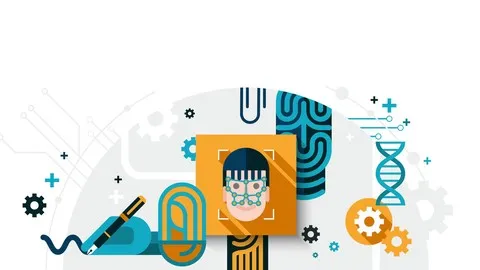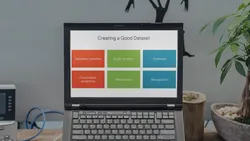
Developing AI Vision Apps Using Microsoft Cognitive Services 
This course provides an introduction to developing AI vision apps using Microsoft Cognitive Services. It covers the use of the Vision APIs available in Microsoft Cognitive Services, which allow developers to create richer, smarter, and more sophisticated applications. Participants will learn how to use these APIs to build applications that can recognize objects, detect faces, and read text from images. ▼
ADVERTISEMENT
Course Feature
![]() Cost:
Cost:
Free
![]() Provider:
Provider:
Edx
![]() Certificate:
Certificate:
No Information
![]() Language:
Language:
English
![]() Start Date:
Start Date:
1st Jul, 2018
Course Overview
❗The content presented here is sourced directly from Edx platform. For comprehensive course details, including enrollment information, simply click on the 'Go to class' link on our website.
Updated in [March 06th, 2023]
This course, Developing AI Vision Apps Using Microsoft Cognitive Services, provides an in-depth look at the Vision APIs available in Microsoft Cognitive Services. Participants will gain an understanding of the Computer Vision API, Optical Character Recognition (OCR), Image Manipulation, Face API, Emotion API, and Custom Vision API. Through hands-on exercises, participants will learn how to piece the APIs together and put them to work in their organization. Prerequisite knowledge of a C-based programming language such as C, C#, C++, or Java is required. At the end of the course, participants will create an application that analyzes and tags images found in Twitter timelines for the presence of human faces and their recognized emotion.
[Applications]
Upon completion of this course, learners can apply the knowledge and skills acquired to develop AI vision apps using Microsoft Cognitive Services. Learners can use the best practices and Fluent Design principles to create Windows 10 Universal Windows Platform applications that can run on multiple devices. Learners can also use the Computer Vision API, OCR, Face API, Emotion API, and Custom Vision API to analyze and tag images found in Twitter timelines for the presence of human faces and their recognized emotion. Additionally, learners can use the APIs to locate the source and physical location of people, places, or organizations referenced in the content.
[Career Paths]
1. AI Vision App Developer: AI Vision App Developers are responsible for developing applications that use Microsoft Cognitive Services Vision APIs to analyze and tag images. They must be proficient in a C-based programming language such as C, C#, C++, or Java, and have a good understanding of the latest best practices and Fluent Design principles. As AI technology continues to evolve, AI Vision App Developers will need to stay up to date with the latest trends and technologies in order to create the most effective applications.
2. AI Vision App Analyst: AI Vision App Analysts are responsible for analyzing the data gathered from Microsoft Cognitive Services Vision APIs. They must have a good understanding of the data gathered from the APIs and be able to interpret it in order to make informed decisions. As AI technology continues to evolve, AI Vision App Analysts will need to stay up to date with the latest trends and technologies in order to effectively analyze the data.
3. AI Vision App Designer: AI Vision App Designers are responsible for designing applications that use Microsoft Cognitive Services Vision APIs. They must have a good understanding of the APIs and be able to create user-friendly and visually appealing applications. As AI technology continues to evolve, AI Vision App Designers will need to stay up to date with the latest trends and technologies in order to create the most effective applications.
4. AI Vision App Tester: AI Vision App Testers are responsible for testing applications that use Microsoft Cognitive Services Vision APIs. They must have a good understanding of the APIs and be able to identify any potential issues or bugs. As AI technology continues to evolve, AI Vision App Testers will need to stay up to date with the latest trends and technologies in order to effectively test the applications.
[Education Paths]
1. Bachelor's Degree in Computer Science: A Bachelor's Degree in Computer Science is a great way to gain the skills and knowledge needed to develop AI vision apps using Microsoft Cognitive Services. This degree program typically covers topics such as programming, software engineering, data structures, algorithms, artificial intelligence, machine learning, and computer vision. Students will also learn about the latest trends in AI and how to apply them to their projects.
2. Master's Degree in Artificial Intelligence: A Master's Degree in Artificial Intelligence is a great way to gain the advanced skills and knowledge needed to develop AI vision apps using Microsoft Cognitive Services. This degree program typically covers topics such as machine learning, deep learning, natural language processing, computer vision, robotics, and AI algorithms. Students will also learn about the latest trends in AI and how to apply them to their projects.
3. Doctoral Degree in Computer Science: A Doctoral Degree in Computer Science is a great way to gain the highest level of skills and knowledge needed to develop AI vision apps using Microsoft Cognitive Services. This degree program typically covers topics such as advanced programming, software engineering, data structures, algorithms, artificial intelligence, machine learning, and computer vision. Students will also learn about the latest trends in AI and how to apply them to their projects.
4. Certificate in AI Vision: A Certificate in AI Vision is a great way to gain the skills and knowledge needed to develop AI vision apps using Microsoft Cognitive Services. This certificate program typically covers topics such as programming, software engineering, data structures, algorithms, artificial intelligence, machine learning, and computer vision. Students will also learn about the latest trends in AI and how to apply them to their projects.
Course Provider

Provider Edx's Stats at AZClass
Developing AI Vision Apps Using Microsoft Cognitive Services describes how to use Microsoft Cognitive Services to develop artificial intelligence vision applications. It covers the use of the vision APIs available in Microsoft Cognitive Services to enable developers to create richer, smarter, and more complex applications. Participants will learn how to use these APIs to build applications that can recognize objects, detect faces, and read text from images. This course provides an in-depth look at the Microsoft Cognitive Services Vision APIs and how to use them to develop AI vision applications.
Discussion and Reviews
0.0 (Based on 0 reviews)
Explore Similar Online Courses

Unconventional Reservoir Geomechanics

Orchestrating Big Data with Azure Data Factory

Python for Informatics: Exploring Information

Social Network Analysis

Introduction to Systematic Review and Meta-Analysis

The Analytics Edge

DCO042 - Python For Informatics

Causal Diagrams: Draw Your Assumptions Before Your Conclusions

Whole genome sequencing of bacterial genomes - tools and applications

Introduction to Computer Vision

Learn Computer Vision with OpenCV Library using Python

Build an Object Detection Model with Python
 Related Categories
Related Categories
 Popular Providers
Popular Providers
Quiz
 Submitted Sucessfully
Submitted Sucessfully
1. What is the prerequisite for this course?
2. What is the Custom Vision API used for?
3. What type of applications can be created with the course?
4. Which of the following is NOT a feature of Microsoft Cognitive Services?
5. What is Microsoft Cognitive Services?
Correct Answer: It is a set of cloud-based intelligence services and APIs for building richer, smarter, and more sophisticated applications.


Start your review of Developing AI Vision Apps Using Microsoft Cognitive Services